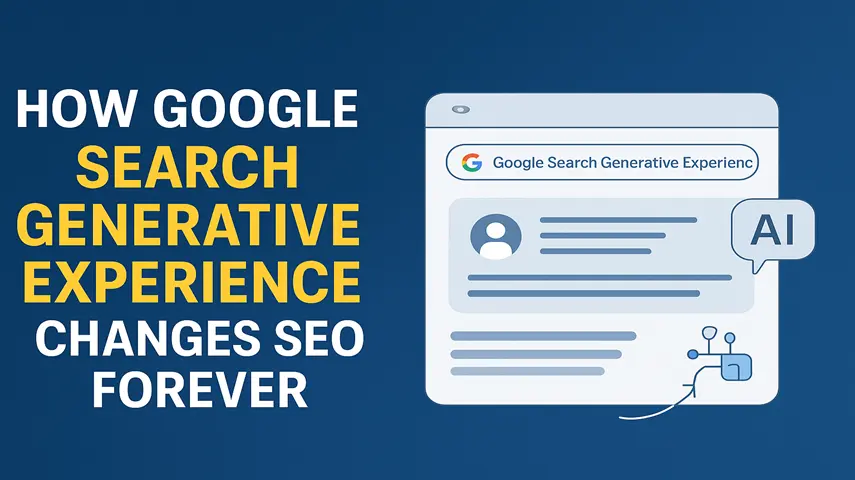Introduction
Influencer Marketing 2.0 has emerged as a powerful strategy that combines traditional influencer marketing with cutting-edge technology. As consumers seek authenticity and connection, brands are increasingly turning to social media influencers particularly micro and nano influencers to establish trust with their audiences. However, this isn’t the same influencer marketing we saw a few years ago. Today, AI in influencer marketing is reshaping how brands identify, connect, and collaborate with influencers, enabling data-driven influencer marketing and hyper-targeted campaigns that deliver results. In this article, we’ll explore how AI is revolutionizing influencer marketing, from influencer campaign optimization to leveraging influencer engagement metrics for more effective brand partnerships.
The Evolution of Influencer Marketing: What Is Influencer Marketing 2.0?
Influencer Marketing 2.0 is the next phase in digital marketing, where brands use advanced technologies, especially AI, to maximize the impact of their influencer partnerships. Unlike traditional influencer marketing, which relied heavily on macro-influencers and blanket strategies, Influencer Marketing 2.0 focuses on highly targeted approaches. AI-powered tools help brands tap into niche influencer communities and create authentic brand partnerships that resonate with specific demographics.
How AI Is Shaping Influencer Marketing
AI technology enhances every step of the influencer marketing process, from discovering micro and nano influencers to tracking performance through real-time influencer engagement metrics. For brands, this shift means more effective marketing campaigns that are tailored to the preferences and behaviors of their target audiences.
Identifying the Right Influencers with AI: A Data-Driven Approach
AI-Powered Influencer Discovery
One of the biggest challenges in influencer marketing has always been finding the right influencers for a campaign. With AI, brands can now analyze vast datasets from social platforms to identify influencers who align with their values and target audience. Data-driven influencer marketing leverages algorithms that assess an influencer’s engagement rates, follower demographics, content style, and niche relevance, allowing brands to make informed choices.
Example: How AI Tools Help Find Niche Influencers
For instance, if a brand is targeting eco-conscious consumers, AI-powered tools can identify influencers who frequently post about sustainability or have followers with interests in environmental causes. This helps brands foster partnerships that feel more authentic and engage a highly relevant audience.
The Rise of Micro and Nano Influencers
In Influencer Marketing 2.0, micro and nano influencers play a significant role. With smaller, dedicated followings, these influencers often have higher engagement rates than their macro counterparts. AI tools can pinpoint these individuals based on engagement, niche, and audience demographics, allowing brands to build consumer trust through highly targeted campaigns.
Crafting Engaging Content with AI-Driven Insights
Personalizing Content for Greater Engagement
Today’s consumers crave authenticity, and content collaboration tools powered by AI help brands create organic influencer content that resonates with their audience. AI tools analyze influencer profiles and audience interactions to craft personalized content suggestions, ensuring that each piece aligns with both the influencer’s voice and the brand’s message.
How AI Enhances Brand Storytelling
With AI, brands can go beyond generic messages to create influencer-driven brand storytelling that builds deeper connections with the audience. By analyzing engagement data, AI can suggest content formats and messaging that drive the highest engagement, whether through photos, video-based influencer campaigns, or interactive stories.
Optimizing Influencer Campaigns with Advanced Metrics
Using Influencer Engagement Metrics for Real-Time Insights
Tracking performance is crucial in Influencer Marketing 2.0. Influencer engagement metrics such as likes, shares, comments, and clicks help brands assess the effectiveness of their campaigns. AI tools offer real-time tracking and analysis, enabling brands to make adjustments on the fly to improve engagement and reach.
Examples of Key Influencer Engagement Metrics
- Engagement Rate: Measures the level of interaction with the content.
- Audience Demographics: Identifies whether the influencer’s followers match the target market.
- Conversion Rate: Tracks how many followers take action after viewing the content, such as signing up or purchasing a product.
With these metrics, brands can continuously improve their strategies and ensure that their campaigns are optimized for success.
Improving ROI with AI in Influencer Marketing
The Importance of ROI Measurement
For brands, understanding the return on investment (ROI) in influencer marketing is critical. Influencer ROI measurement tools allow companies to calculate the effectiveness of their campaigns by analyzing metrics like reach, engagement, and conversions. AI enhances this process by providing in-depth insights that help brands identify the most profitable influencers and partnerships.
Best Practices for Maximizing ROI with AI
- Set Clear Goals: Define what success looks like for each campaign.
- Use Predictive Analytics: AI tools can predict the likelihood of success for specific influencers based on past performance.
- Focus on Long-Term Relationships: Rather than one-off collaborations, brands should invest in brand ambassador programs to drive sustained engagement.
By following these best practices, brands can maximize the impact of their influencer marketing strategies and achieve better ROI.
Navigating Sponsored Content Guidelines with AI Assistance
Ensuring Compliance and Authenticity
With the rise of social proof in marketing, sponsored content guidelines have become increasingly important. AI tools help ensure that influencers comply with regulations by monitoring content for disclosure language and other compliance factors. This adds a layer of authenticity, as transparency builds trust with audiences.
How AI Streamlines Sponsored Content
AI-powered compliance tools can automatically flag posts that don’t meet regulatory standards, helping brands avoid potential penalties and maintain credibility. This is especially crucial as consumers demand transparency from brands and influencers alike.
Creating a Cross-Platform Influencer Strategy for Maximum Reach
The Power of Omnichannel Marketing in Influencer Marketing 2.0
A cross-platform influencer strategy allows brands to connect with audiences across multiple channels. AI tools help brands determine the most effective platforms for their campaigns by analyzing audience preferences and engagement patterns. By adapting content for each platform, brands can create a unified message that resonates across channels.
Strategies for Effective Cross-Platform Marketing
- Platform-Specific Content: Tailor content to fit the platform’s style and audience, such as short videos for TikTok or in-depth guides for LinkedIn.
- Collaborate with Multi-Platform Influencers: Partner with influencers who are active on multiple platforms to expand reach.
- Use Consistent Branding: Maintain brand identity across channels while adapting content to suit each platform’s tone.
Leveraging AI for Future Influencer Marketing Trends
Influencer Marketing Trends to Watch
Influencer Marketing 2.0 is constantly evolving, and staying ahead of influencer marketing trends is key for success. AI tools can help brands adapt to emerging trends by offering real-time insights into shifts in consumer behavior, content preferences, and influencer performance.
Top Trends in Influencer Marketing 2.0
- Niche Influencers: As audiences grow weary of generic content, niche influencers with loyal followings will continue to rise in popularity.
- Short-Form Video Content: Platforms like TikTok and Instagram Reels are booming, making video-based influencer campaigns a must.
- Increased Transparency: As consumers demand transparency, authenticity will become even more crucial for influencer partnerships.
By leveraging AI to stay on top of these trends, brands can remain competitive and relevant in the ever-changing influencer landscape.
Conclusion: Embracing the Future with Influencer Marketing 2.0
As AI technology continues to shape the digital marketing landscape, Influencer Marketing 2.0 offers brands exciting new ways to connect with their audiences. By adopting AI-driven tools, brands can optimize every aspect of their influencer campaigns from influencer campaign optimization and engagement tracking to influencer ROI measurement and compliance.
In an age where consumer trust is more important than ever, authentic brand partnerships and influencer-driven brand storytelling are essential for building lasting connections. By understanding and embracing these advancements, brands can create more meaningful and impactful campaigns, capturing the attention and loyalty of their target audiences.




